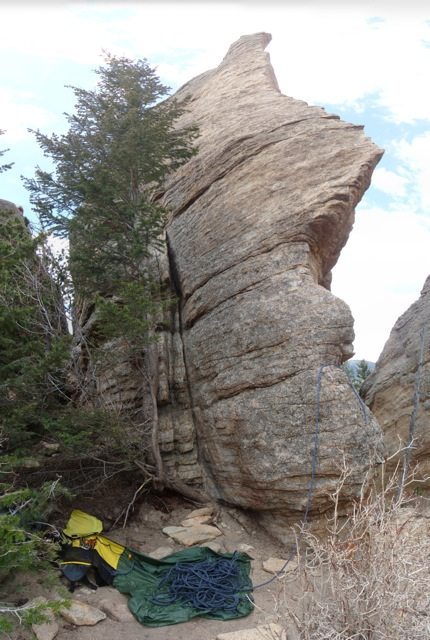12-13) BLISTER: What are your long term goals for Boulder5? Is it hard to compete with bigger companies that manufacture their products overseas?
George: I really look up to what CiloGear is doing. Those guys are production, headquarters, everything in Oregon.
My bottom line is to keep doing this on my terms. It’s upsetting how alienating working in industry was. I was super glad for the experience, because I now know not just how to make a pack but to do it professionally, and to do all the supply chain and costing.
My goal is to take all that experience to produce a product so that it maintains its integrity and its functionality.
14) BLISTER: How hard is it to break into this particular outdoor sports market?
George: On a small level, it’s really easy to break into the market. You just go climbing with the pack and the guys climbing next to me are like, “Hey man, where’d you get that?” When I feel like sitiing down and banging out a few, I do.
As far as growing and maintaing integrity, it looks easy to me from here. There are a lot of challenges, but it should also be fun.
It’s like that pin scar finger crack I was working this morning. I guess it was really hard, but I’m stoked. Tomrorow morning that’s the first thing I’m going to be doing. I just need to crank a little harder so I can get up it. It’s so much fun, it seems easy.
I’m a designer, so I’m trying to think of it as designing a new way to do business.

15) BLISTER: So is Boulder5 your full time job now?
George: I’ve been doing R&D work for people, a lot of prototyping. I specialized in soft goods like these packs, and drafting mens’ pants patterns.
But I’ve felt more drawn to doing the Boulder5 work, and I’ve been putting off these projects that were actually earning me money.
16) BLISTER: What are some of the companies you’ve been contracting with?
George: I did just partner up with Beyond Gear to design a couple new products and one that’s signed, sealed and delivered.
17) BLISTER: Do many of these companies contract with outside designers instead of doing the work in-house?
George: Oh yeah, that’s all it is. It’s the same way in apparel, soft goods, and I’m pretty sure it’s the case for most hard goods.
You’ll have a contracted designer who will put together most of the package. Your product developers work in-house, so they’ll finish off the trim and colors so the design line for 2014 homogenizes. Then they’ll put together a spec packet for the factories.
So product development and maybe a second, sublevel designer work in-house, but usually the main designs are contracted out.
Mountain Hardwear used to do their tents in house until about four years ago. The guy retired and then the company started contracting. And if you go through their design line between 2009-2010, I think, you will see the difference. The guy was just brilliant.
18) BLISTER: What’s that work environment like?
George: It’s really alienating. When I was a technical designer for Pearl Izumi, I would sit at a desk all day making patters on CAD, then I’d email the pattern to China. Three weeks later some clothes would show up and we’d fit them. I’d change things on CAD, email the revisions, and then the product would come.
You’re so removed from the product at that point.
I hated it, so when my contract ended, I started waiting tables for a little while to figure out what I wanted to do.
I began doing some R&D for a while, and then I started making pants for people, like an old school tailor. I loved it. This person would tell you a story and you’d make jeans fit just for them.
You should be able to shake the hand of the guy you made the product for. It gives so much added meaning and value.
The fact that we’re out there working the same desperate finger cracks gives the pack a much more personal feel.
19) BLISTER: And is this connected to the sprit of climbing entrepreneurs you’d mentioned?
George: I think so. Climbing has a history of being really rogue. When I started climbing 15 years ago, it still was.
There weren’t nearly as many bolts, there weren’t as many guide books, there was no Mountain Project, and there weren’t as many people. So there wasn’t as much demand.
20) BLISTER: What’s next for boutique companies in the climbing world, do you think?
George: I believe this modern era of e-commerce, crowdfunding and basic entrepreneurism that the recession seemed to actually inspire can bring forth something new. Because that rouge spirit of climbing is ever present.
Anytime you go out and cheat death, you gotta be a little bit crazy.
I think we can usher in a new era of the little guy with all the new technology we have.
